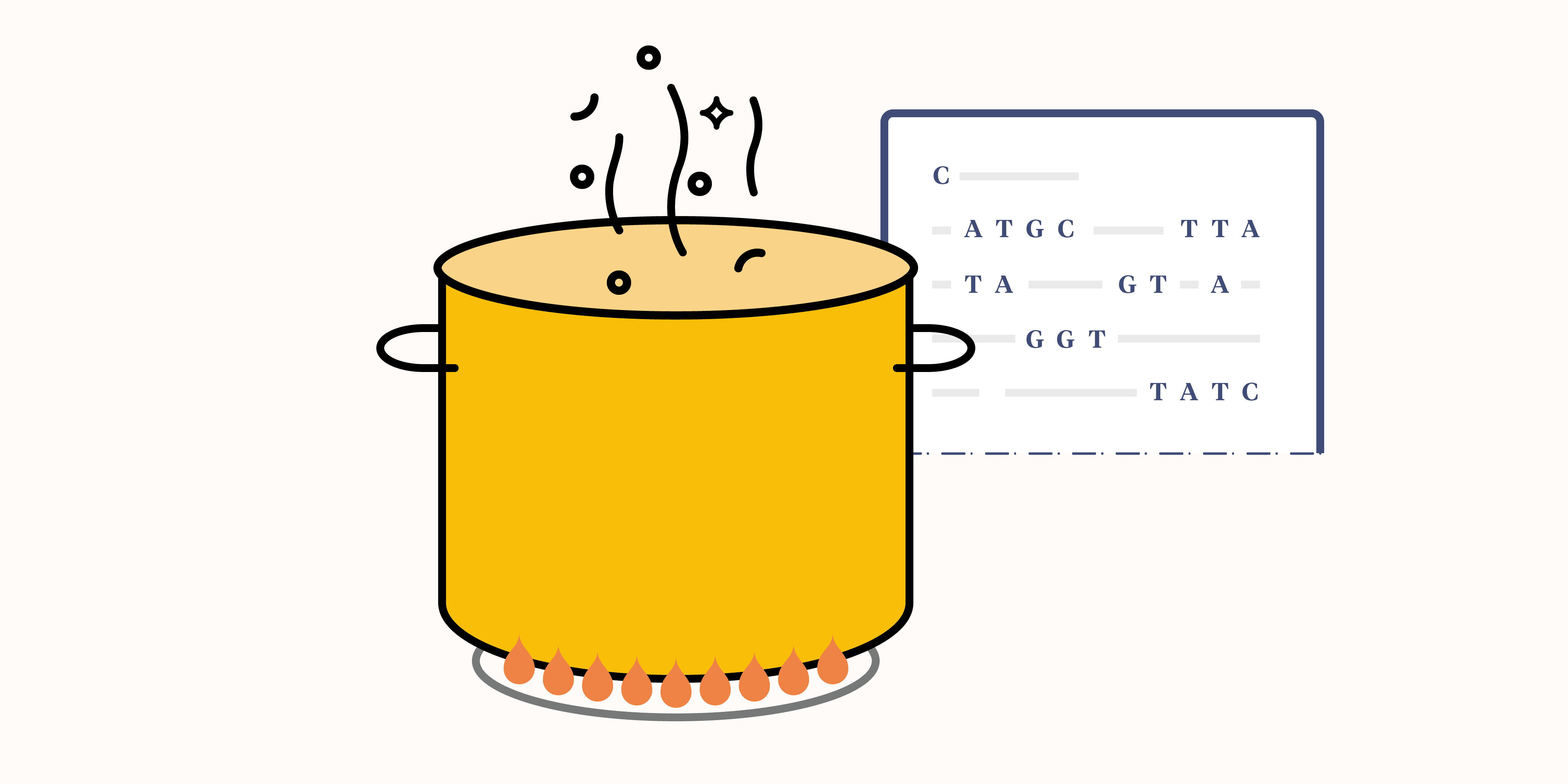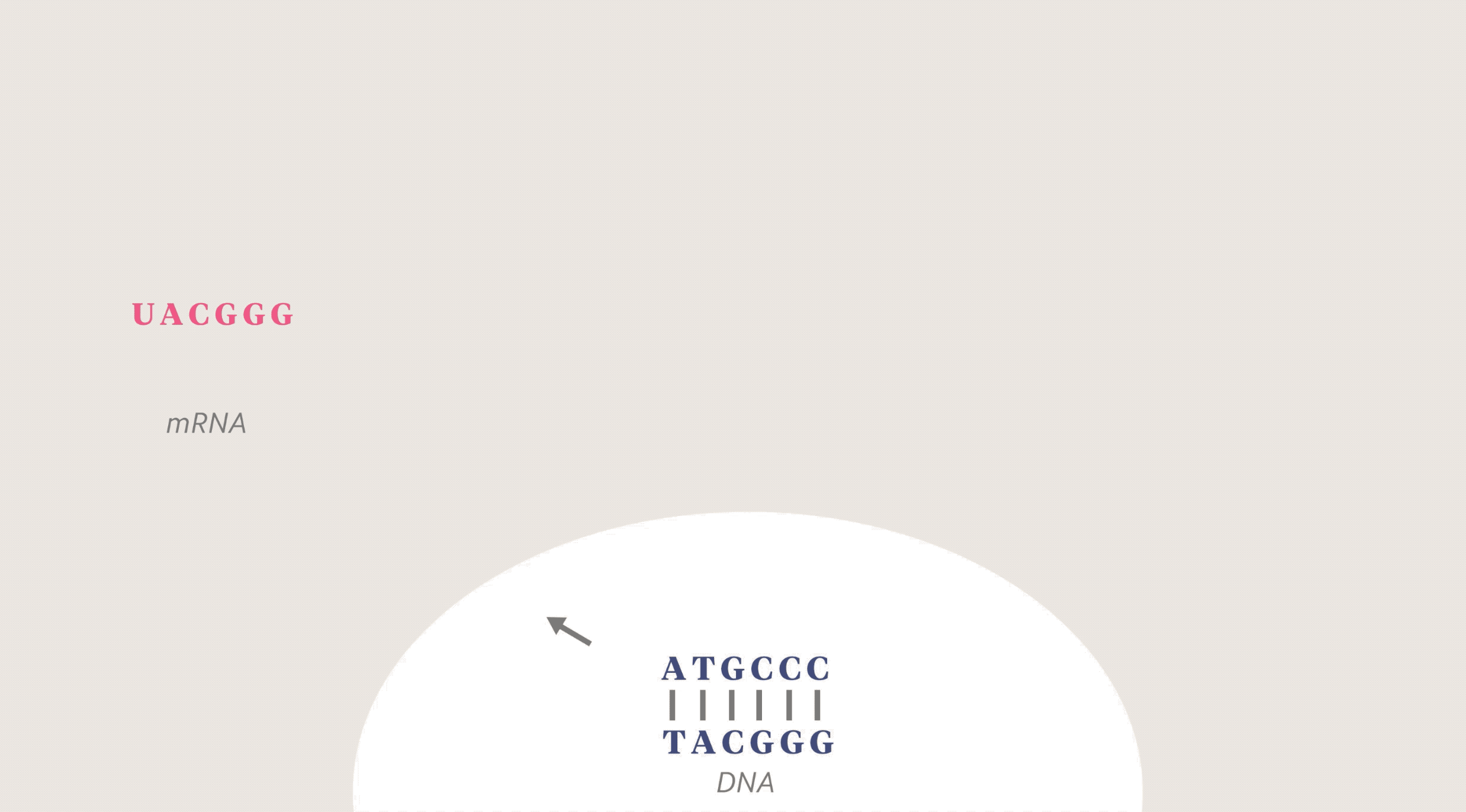How does the information in our DNA build life?

Transforming messages from one medium to another is integral to modern life. We rely on it to transmit our voices from one phone to another, and more abstractly to convert spoken words into written languages. But in a much more basic sense, life is made possible thanks to the message translations that occur within your genome every minute of every day. These messages originate in your DNA and are then translated into life’s molecular machinery known as proteins. Understanding this process can help you appreciate why different variations of a specific DNA sequence lead to diversity among people.
Your DNA is confined to the cell’s nucleus. Coded within that DNA are thousands of messages, each of them capable of influencing some aspect of our being. Collectively, they provide the instructions needed to build a human. But to act on those instructions, the body needs a way to transform information from the DNA into actionable entities. To do this, it transcribes the information into RNA. This process was coined by Francis Crick as the central dogma of biology—the directional flow of information from DNA to RNA and then into proteins. As with any complex process, there are logistics to consider here: The DNA is confined to the nucleus where only some of the message-converting machinery is located; the rest is outside the nucleus. Because of this, the information in the DNA needs to be transmitted out of the nucleus and sent to other parts of the cell (in some neurons, that can mean traveling a whole meter away from the nucleus!). To accomplish this feat, the instructions in your DNA are copied and transmitted to other parts of the cell in the form of mRNA.
mRNA is a short-lived molecule that is very similar to DNA, but has some important differences. What’s important to know for this article is that mRNA is built based on a gene’s DNA sequence and holds the instructions for how to build a protein. Additionally, the mRNA can leave the nucleus. Through mRNA, the DNA is able to transmit its messages out to other parts of the cell. (Learn more about mRNA here.)

Information from the DNA is coded into mRNA which leaves the nucleus of the cell (the white region) and is used by ribosomes (outlined in green). In the ribosome, tRNA basepairs with the mRNA in a process that links amino acids (colored circles) together. The amino acid chain will be folded into a protein.
Converting messages from one medium to another requires a mechanism that actively converts the messages from one medium—like the soundwaves of your voice—into another (like radio waves that travel between cellphone towers). These machines are called modulators. There are modulators that convert information from DNA into RNA, and there are modulators that translate mRNA information into proteins. The latter are known as ribosomes. Ribosomes are proteins that read messages in the mRNA and convert them into a string of amino acids (the basic building blocks of proteins). There are 20 different amino acids used to translate mRNA into protein. These amino acids can be combined into various arrangements that ultimately build proteins.
Complementary pairs
Each nucleotide used in DNA (A, C, T, and G) has its own chemical properties that influence which complementary nucleotide they can interact with. For example, G always pairs with C, and A pairs with T. The relationship between A and T, or G and C is referred to as complementary base pairing. The same is true for RNA, but the nucleotide U is used instead of T. Through complementary base pairing, tRNA is able to recognize specific codons in mRNA.
Messages in the DNA (and the mRNA) are coded such that ribosomes have to use a key to translate them. Ribosomes call upon a particular type of RNA to serve as their tool for decoding mRNA. This special tool is known as tRNA (transfer RNA, because it’s involved in the transfer of amino acids to a newly forming protein). mRNA’s code is broken down into sets of three nucleotides, following a specific “start” sequence (AUG, in RNA). These groups of 3 are known as codons. For each codon, there is a specific tRNA that will recognize the three-base code via complementary base pairing. Once bound to the mRNA and ribosome, the tRNA passes an amino acid off to the ribosome which is simultaneously linked to the growing strand of amino acids. This process repeats itself, with every codon prompting the addition of a new amino acid until a specific “stop” codon is read. Based on the unique chemical and physical properties of each amino acid, the protein is then folded like origami and sent off to do its job. A protein’s function is dictated by the amino acids used to build it.
This incredible process is the basic mechanism for how information from DNA is transformed into life. So how does all of it help you understand human diversity? Small changes in the DNA sequence can be inherited from generation to generation. Sometimes these changes alter the body’s ability to read a message in the DNA, or they may alter the message itself. When this happens, it can result in a premature “stop” signal which causes the protein to be shorter than usual and sometimes non-functional. It could also change one amino acid to a different one that alters the protein’s function. There are many ways that the messages within DNA can be distorted by small changes in the DNA sequence. Most of the time, though, variations in a person’s DNA sequence have no effect at all because many DNA changes either don’t change the amino acid sequence or swap an amino acid for one that does no harm. Researchers are actively working to understand how changes in a person’s DNA sequence may affect their traits. This work yields the insights that make DNA-powered products possible and helps us understand how genetics can influence our everyday lives.